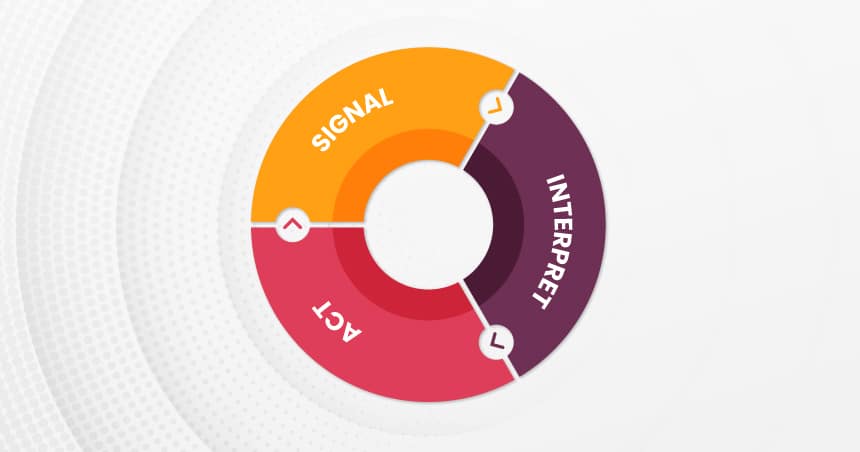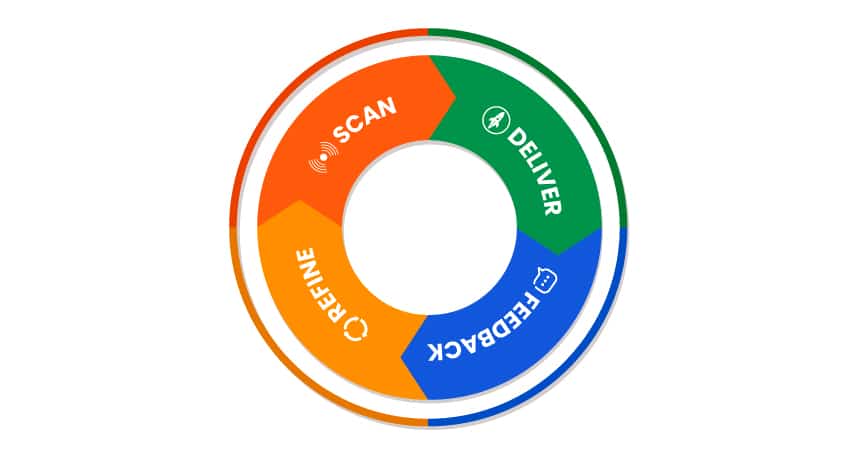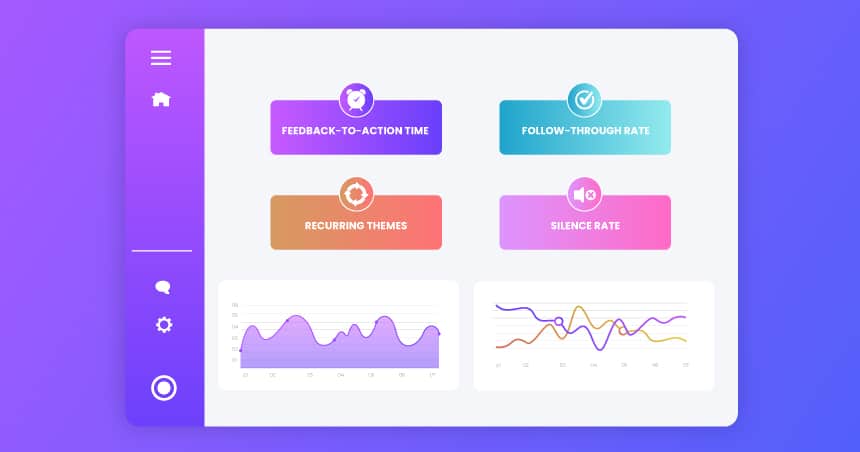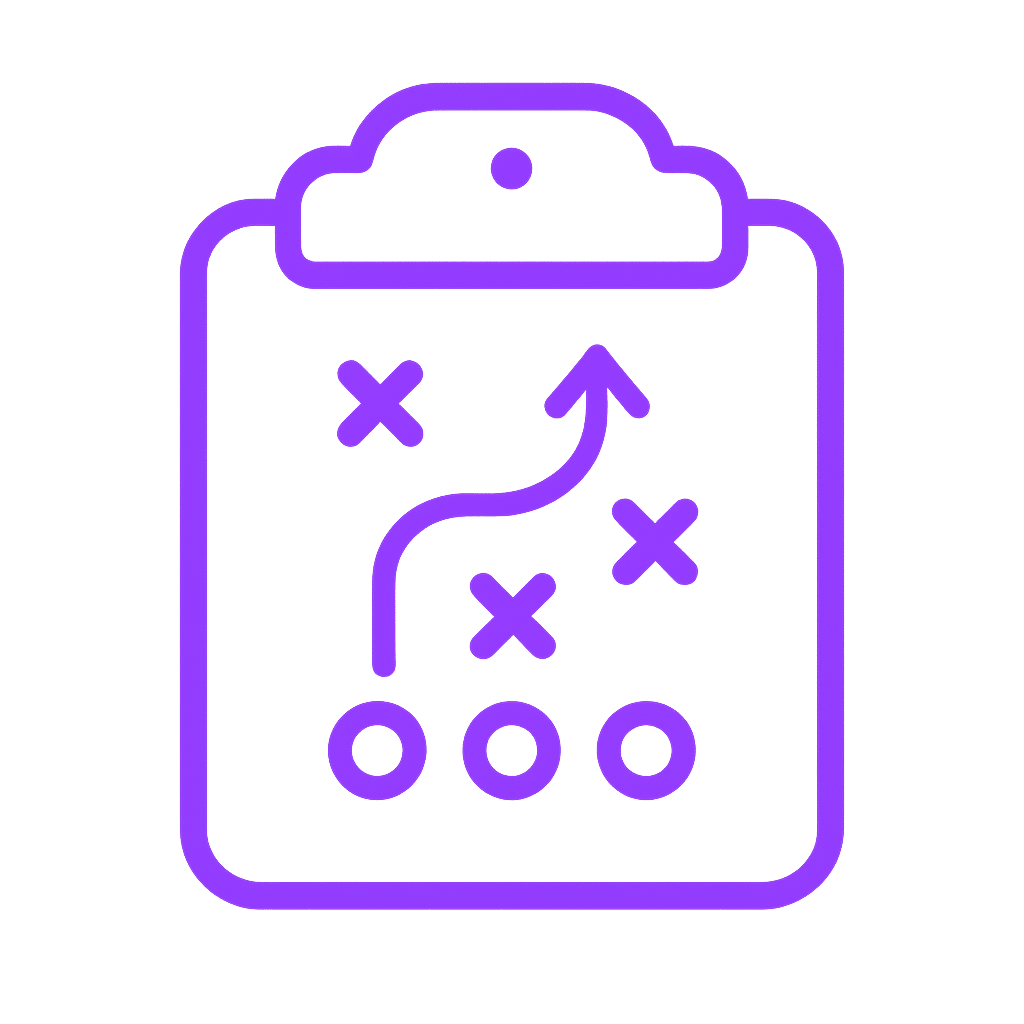
TL;DR
The FAST-FEED framework helps teams speed up meaningful progress by reducing feedback delays through Frictionless Access, Actionable Format, Signal Timing, and Embedded Loops—creating a culture of continuous, real-time improvement.
Introduction
Speed gets a lot of credit in business. But speed without learning? That’s just motion.
Real progress happens when feedback keeps pace with the work. When insights are timely, relevant, and utilized effectively, effort translates into improvement. Not just activity.
Every initiative offers opportunities to learn something, whether it is a product launch, a new client kickoff, or a bold marketing move. Valuable learning is discoverable only when insight is rapidly disseminated, reaching the people who can optimally leverage it.
If the loop takes too long, the moment is lost. If it’s tight, every step gets sharper.
Here’s the issue. Most teams still operate on a delayed schedule.
Campaigns are reviewed weeks after they go live, product insights stay buried in decks, and strategy shifts come after the window to act has closed. That kind of lag slows everything down.
The faster you close the loop, the quicker you move forward.
Tight feedback cycles don’t just improve outcomes. They build a culture of clarity. Teams stay in sync, learn faster, and adapt in the moment.
This article lays out a practical framework to close the gap between action and insight. There is no jargon, no extra tools, just clear steps to make feedback part of your work.
Let’s get started.
Table of Contents
- Understanding the Feedback Loop
- The FAST-FEED Framework: How to Tighten the Loop Without Adding Noise
- How ImpelHub Accelerates Strategic Feedback Loops
- The Overlooked Levers That Make or Break Feedback Loops
- Tools and Rituals That Keep Feedback Moving
- Making It Stick: Metrics & Mindset
- Conclusion
- Frequently Asked Questions (FAQs)
Understanding the Feedback Loop
A feedback loop is how you turn experience into improvement. You take action, observe the outcome, and let that shape what you do next. It’s how progress actually happens. In a business setting, it means listening to customers, teams, or key performance signals and using that input to make smarter decisions, improve how things run, and deliver more value where it matters.
Most feedback loops follow a basic rhythm:
You spot a signal, make sense of it, and respond.
That signal might come from a user struggling with a feature, a colleague flagging a broken process, or a drop in key metrics. Building momentum can only be achieved when the pieces of the puzzle can be quickly connected and responded to.
In theory, it sounds simple. But in practice, it’s where most teams get stuck.

The Delay That Quietly Slows Teams Down
The issue isn’t a lack of feedback. It’s the delay in turning that feedback into action.
A product team might hear usability complaints through support channels, but without a clear system to surface and escalate those insights, they sit buried in call logs or support tickets. At the same time, marketing might run a full campaign before anyone pauses to ask what actually worked. The team’s already moved on by the time the data comes in. The feedback was there. It just didn’t reach the right people soon enough.
These delays quietly chip away at progress. Time gets lost in the handoff, and teams lose the rhythm that keeps their work moving forward. Over time, slow feedback loops lead to:
- Fixes that arrive after the damage is done
- Opportunities that pass by unnoticed
- Strategies that slowly drift out of alignment
And the longer that loop stays open, the harder it is for teams to stay on track
Where Feedback Loops Break (and Why They Do)?

Even the best teams experience breakdowns in their feedback loops. Not because they ignore feedback, but because the process for capturing, interpreting, or acting on it is fragile or, worse, unclear.
Here’s where things usually go wrong:
Stage | What Slips Through | Real-World Example |
Signal | Feedback never gets captured or arrives too late | A customer mentions a bug during a call, but it’s never logged or passed to the product team |
Interpret | The team misreads the feedback or lacks full context | Engagement drops are blamed on design tweaks, when the real issue is confusion over pricing |
Act | Action stalls or never happens at all | Lessons from a retrospective are discussed, then quietly forgotten with no follow-through |
These breakdowns rarely happen because people don’t care. More often, they stem from things like vague ownership, siloed tools, or feedback channels that aren’t designed to drive momentum.
When No One Speaks Up
Silence can feel like a good sign. No complaints? Everything must be fine.
But in reality, silence can be a red flag. It may signal that:
- People aren’t sure where or how to share feedback.
- They don’t feel comfortable speaking up.
- Or worse, maybe they’ve just stopped bringing it up.
You’ll see this often in cross-functional setups or customer-facing roles; the folks who are closest to what’s not working are often the ones who feel least heard or least able to change it.
That’s why strong feedback loops aren’t just about processes.
They’re built on trust. On shared context.
And on the belief that feedback is a way forward, not a roadblock.
The FAST-FEED Framework: How to Tighten the Loop Without Adding Noise
How do I make feedback faster and more useful?
If your team is sluggish, focusing on providing more feedback is rarely the solution. What truly aids is creating faster, cleaner pathways from insight to action.
That’s where the FAST-FEED framework comes in. It’s a practical approach designed to close the loop at four critical points where feedback often breaks down: access, clarity, timing, and integration.
Every principle is aimed at creating a seamless, responsive feedback system where the team utilizes feedback as a core function rather than an afterthought.
1. Frictionless Access
When it’s hard to give feedback, people don’t. They wait, they forget, or they give up altogether.
The ability to share feedback informally through comments or emoji polls increases the amount and quality of feedback given. These can be done through shared documents, team chats, or through lightweight prompts integrated into the team’s tools.
What helps:
- Give people space to speak up without making it feel like a process.
- Avoid feedback systems that rely on complex permissions or formal formatting.
- Feedback shouldn’t be a chore; it should feel like a gentle nudge.
2. Actionable Format
For feedback to be relevant and useful, it should drive decisions. Feedback should be precise; comments like “this didn’t work” are unhelpful and not constructive. Instead, feedback should make the next step obvious.
Strong feedback points to direction, not just reflection. It answers questions like
- What should we do more of?
- What needs to stop, shift, or be reworked?
- Where exactly should we focus next?
Simple structures like Start / Stop / Continue or direct, verb-led comments (“Consider tightening this intro” or “Clarify this CTA”) can make a big difference in how quickly action follows.
3. Signal Timing
The best feedback comes close to the moment something happens. Wait too long, and the details fade or lose relevance.
To keep signals sharp and useful, feedback should be captured in real time or as close to it as possible.
Try this:
- Add two minutes at the end of a call to capture quick reactions.
- Don’t wait until the end of a sprint to hold a retrospective; hold them at intervals throughout the sprint.
- Don’t wait until a sprint review to ask for feedback; ask during the product demo.
Real-time input leads to real-time improvement.
4. Embedded Loops
High-performing teams don’t treat feedback as a separate activity. It’s built into how they work, how they plan, collaborate, and adjust along the way.
For example, some teams using ImpelHub embed feedback directly into their strategy documents. Living documents like shared dashboards, commentable canvases, and living trackers allow for contributions while enhancing the ability to report, rather than reporting stagnant information.
When feedback becomes a part of the process, there’s no need to “remember” to close the loop. Everything happens automatically and continuously.
Tight feedback loops aren’t about gathering more opinions. They’re about making insight flow with less resistance and more rhythm. When you reduce the friction at these four points, you shorten the path from learning to doing.
How ImpelHub Accelerates Strategic Feedback Loops
Most teams try to improve strategy through internal retros or isolated research.

ImpelHub flips the script by building adaptive feedback loops into every phase of strategic execution, not just research.
At every step, ImpelHub captures external signals, integrates internal responses, and evolves your strategy in real time. Here’s how the loop works:
- Scan: From competitor moves to shifting market narratives, ImpelHub actively monitors the landscape.
- Deliver: You get tailored strategies, whether it’s messaging, targeting, positioning, or channel plays, aligned to current conditions.
- Receive Feedback: You react, sharing what landed, what fell flat, or what you’re seeing on the ground.
- Refine: Your feedback is fed back into the system, and your strategy evolves. Faster. Sharper. Continuously.
This always-on, feedback-integrated approach applies across every ImpelHub touchpoint, whether we’re developing growth strategies, ICP definitions, messaging pivots, or execution plans.
It’s not just a loop. It’s a rhythm that ensures your strategy evolves as fast as your market.
The Overlooked Levers That Make or Break Feedback Loops
You can have the right structure, tools, and intentions, and still struggle to make feedback loops work. Why? Because some of the most important dynamics don’t show up in your dashboards or process-driven routines.
While these tasks may be less noticeable and quieter, they play a significant role in establishing a feedback culture.
These are three of the most disregarded elements that determine how teams modify and advance.
1. Shadow Loops: Feedback That Doesn’t Follow the Rules
Not every insight makes it into your retrospectives or forms. Some of the most valuable feedback lives in the background in offhand comments, side conversations, or buried support notes.
These “shadow loops” don’t follow the official path, but they shape outcomes all the same. Ignore them, and you risk missing key signals.
Where they show up:
- A passing comment during a hallway chat
- A frustrated tone in a client call
- A pattern hidden inside support tickets or Slack threads
How to bring them into the light:
- Pay attention to the patterns in everyday chatter; those offhand comments often reveal more than formal updates.
- Ask your team to share what’s real. Snippets. Screenshots. Quick quotes. Not everything needs to be a polished report.
- Assign someone to scan live channels regularly for feedback that doesn’t fit the usual mold.
Shadow loops aren’t noise. They’re often the early warnings you can’t afford to miss.
2. Feedback Fatigue: When Loops Become a Grind
Too much feedback can slow momentum just as quickly as too little.
If every task is dissected, reviewed, and revisited, teams start to stall. Decisions take longer. Confidence drops. Over time, people pull back. Not because they don’t care. But because the process feels draining.
Symptoms of feedback overload:
- Reluctance to make decisions without endless input
- Resistance to feedback because it feels constant
- Burnout from repeated revisions with no clear endpoint
What works instead:
- Be intentional. Not every piece of work needs a feedback cycle.
- Focus on moments where feedback adds the most value: onboarding flows, key messaging, and product launches.
- Let lower-stakes work run clean to preserve team energy and pace.
Tight loops aren’t about touching every task. They’re about being strategic with your attention.
3. Feedback Equity: Making Space for Every Voice
Too often, feedback favors those who speak loudest or hold senior titles. But that creates blind spots, and sometimes, costly ones.
Some of your sharpest insights might come from:
- A new hire who questions something everyone else takes for granted
- A junior team member who’s closer to the details
- A quiet customer who doesn’t complain; they just leave
Creating feedback equity means making it safe and easy for all voices to contribute, not just the confident or senior ones.
Ways to invite more voices in:
- Use anonymous channels when needed
- Pair written reflections with group reviews
- Check in one-on-one with quieter teammates before meetings
It’s not just about collecting more feedback. It’s about creating a culture where insight is shared across levels, roles, and personalities. That’s how teams get sharper and stay aligned.
Small Levers, Big Impact
Not everything that shapes your team’s growth shows up in a report or dashboard. Sometimes it’s the small, overlooked levers like these. But once you start noticing those moments, you can shift them. Bit by bit, those small moves turn into better habits, ones that bring your entire feedback loop into focus.
Tools and Rituals That Keep Feedback Moving
Having a framework is great, but what really makes feedback loops work are the small things teams do every day. A quick check-in here, a follow-up there, a tweak that happens right when it matters. You don’t need a big reset to make that happen.
Just a few tools that fit your flow and routines that your team actually uses can quietly shift things from slow reactions to in-the-moment decisions.
Real feedback flow starts with behavior. And the more natural it feels, the more consistently it happens.
Simple Habits That Strengthen the Loop
These aren’t heavy processes. They’re easy-to-adopt practices that quietly build feedback into your team’s rhythm.
1. Ten-Minute Wraps
Right after a launch, a handover, or a big meeting, just pause. Take ten minutes. Talk about what clicked, what didn’t, and what’s worth carrying forward. Ask simple questions like
- What went better than expected?
- What would we do differently next time?
- Did anything slow us down or surprise us?
Keep it short, casual, and real. It could be a quick huddle, a casual chat, or a whiteboard brainstorm, whatever works for your team. The goal isn’t to analyze everything. It’s just to catch the insights before they fade.
2. One-Question Check-Ins
Instead of lengthy feedback forms, consider using a singular, precisely crafted question at the most appropriate moment.
For instance:
What’s one thing we should tweak before the next sprint or release?
This small shift allows feedback to be more informal, more regular, and simpler to provide as part of a person’s regular work.
3. Focused Feedback Sessions
Pick one slot a week, say, “Feedback Fridays” or “Retro Mondays,” to reflect as a team. Just 15 to 20 minutes. One topic. That’s it. Maybe you unpack a recent campaign, walk through a new process, or reflect on a feature you just launched.
The point is to make reflection feel normal, something you do, not something you schedule.
You don’t need more tools or back-to-back meetings to build better feedback habits. Just make time to pause. Learn. And move forward.
Tools That Keep Feedback in Motion
No tool will magically fix your feedback process. But the right ones can reduce friction, make insights easier to surface, and support the rhythm your team needs to learn and adapt faster.
Purpose | Tool Suggestions | Tip |
Collaborative feedback | Google Docs, Notion, Miro | Keep comments inside the work, right where the discussion happens |
Async team input | Slack, Loom, Typeform | Use scheduled nudges or one-question check-ins to prompt input |
Voice of the customer | Gong, Intercom, Canny, Help Scout | Tag repeat issues and surface them early to product or ops teams |
Internal reflection | Trello, Linear, Range, Fellow | Capture insights during retros not hours or days later |
Use tools to make things simpler, not heavier. Feedback shouldn’t feel like another task.
When it flows with your team’s daily work instead of sitting outside it, it becomes easier to notice, share, and act on.
What Loop-Centred Teams Get Right
Top performing teams aren’t obsessed with getting more feedback. They focus on making feedback easy to share and even easier to use.
They create a culture where reflection isn’t reserved for big reviews; it’s part of how the work gets done. They listen at the right moments. They act without dragging their feet. And they stay in sync by learning as they go.
That rhythm builds something stronger over time: trust, clarity, and real momentum.
Making It Stick: Metrics & Mindset
How can you measure if the feedback process is working?

Speed alone doesn’t make a feedback loop valuable. What matters is whether that speed translates into clarity, smarter decisions, or real improvement. Otherwise, it’s just noise moving faster.
To build feedback habits that actually last, two ingredients matter more than any tool:
- A way to measure if your loops are driving change
- A mindset that sees feedback as embedded in the work, not something extra
Is Your Feedback Loop Actually Working?
You don’t need dashboards full of KPIs to gauge loop health. A few simple, observable signals can tell you whether feedback is flowing and being used.
Metric | What It Tells You | How to Track It |
Feedback-to-Action Time | How quickly feedback leads to a response or change | Add timestamps to retro notes or comments |
Follow-Through Rate | % of feedback that results in visible action | Review open vs. completed action items |
Recurring Themes | Are the same issues coming up repeatedly? | Flag repeated topics during team reviews |
Silence Rate | Are key people no longer contributing feedback? | Watch for dips in check-in or retro input |
You don’t need to obsess over precision. Even light tracking every couple of weeks can show whether your loop is closing or if signals are getting lost along the way.
Feedback Is a Culture, Not a Checkbox
Lasting feedback loops aren’t built by running more retros. They come from what your team practices every day.
- Leaders shape the tone. They give feedback early, clearly, and without hesitation.
- Teams do better when feedback feels like progress, not a personal hit.
- Systems should support response, not just collection.
It’s not “Did we collect feedback?”
It’s “Did we hear what mattered and act on it?”
Because when feedback becomes part of the daily rhythm, not just a quarterly review, it stops being a ritual and starts becoming a reflex. Loops don’t just close. They compound.
Conclusion: Start Small, Close One Loop
Tightening your feedback loop doesn’t require a team-wide transformation or a new stack of tools. It starts with one moment, one loop; you choose to close a little faster than before.
That might look like:
- Following up on client input the same day instead of next week
- Turning a long debrief into a quick async voice note
- Capturing takeaways right after a product demo, while the insights are still warm
- Dropping a reflection in Slack instead of waiting for the next scheduled meeting
Your change need not be radical. It just has to be noticeable.
And when you go first by offering clear, timely feedback, others tend to follow. It creates a ripple effect.
Here’s one simple question to move you forward:
Where in your workflow is feedback arriving too late or not at all?
Find that gap.
Close that loop.
Then keep going.
Tighter feedback doesn’t just increase speed. It brings clarity. It aligns strategy. It catches small issues before they become bigger ones. And most importantly, it builds a rhythm of consistent, meaningful progress week by week, loop by loop.
Because when feedback works, teams don’t just move faster.
They move smarter. Together.
Frequently Asked Questions (FAQs)
What is a feedback loop in a business context?
A feedback loop is the process of gathering input (signals), interpreting that input, and taking action based on it. In business, it turns insights into improvement whether it’s customer complaints, team retrospectives, or performance data.
Why do feedback loops break down in teams?
Breakdowns happen when:
- Feedback isn’t captured or logged (Signal).
- It’s misunderstood or lacks context (Interpret).
- No action is taken or it’s forgotten (Act).
This often results from unclear ownership, siloed tools, or weak feedback cultures—not a lack of data.
What is the FAST-FEED framework?
It’s a four-part system designed to speed up and smooth out the feedback process:
- Frictionless Access: Make giving feedback easy and informal.
- Actionable Format: Ensure feedback is clear and directs the next step.
- Signal Timing: Capture input in real-time or close to the event.
Embedded Loops: Integrate feedback into daily workflows and tools.
How can I tell if our feedback loop is too slow?
Warning signs include:
- Fixes coming too late
- Repeated issues with no resolution
- Long silences or “no feedback”
- Delayed decision-making
- Retrospectives that feel performative or unproductive
How can I collect feedback without overwhelming the team?
- Don’t seek feedback on every task.
- Focus on high-impact moments (product launches, onboarding, messaging).
- Use short check-ins (e.g., “What should we tweak before the next release?”).
- Run feedback sessions that are time-boxed and focused.
What are shadow loops?
They’re informal feedback pathways like side chats, Slack threads, or client tone changes—often more revealing than formal surveys. Ignoring them means missing out on early signals or subtle patterns.
How do I measure if our feedback loops are working?
Track simple signals:
- Feedback-to-Action Time: How quickly is feedback turned into action?
- Follow-Through Rate: Is feedback actually acted upon?
- Recurring Themes: Are issues resolved or repeated?
- Silence Rate: Are some voices disappearing from the loop?
How can we start improving feedback loops today?
Try one of these:
- Wrap a meeting with a 10-minute reflection.
- Ask a single-question check-in at the end of the day.
- Embed a feedback prompt in a shared doc.
- Follow up on client input the same day.
Small shifts compound over time.



